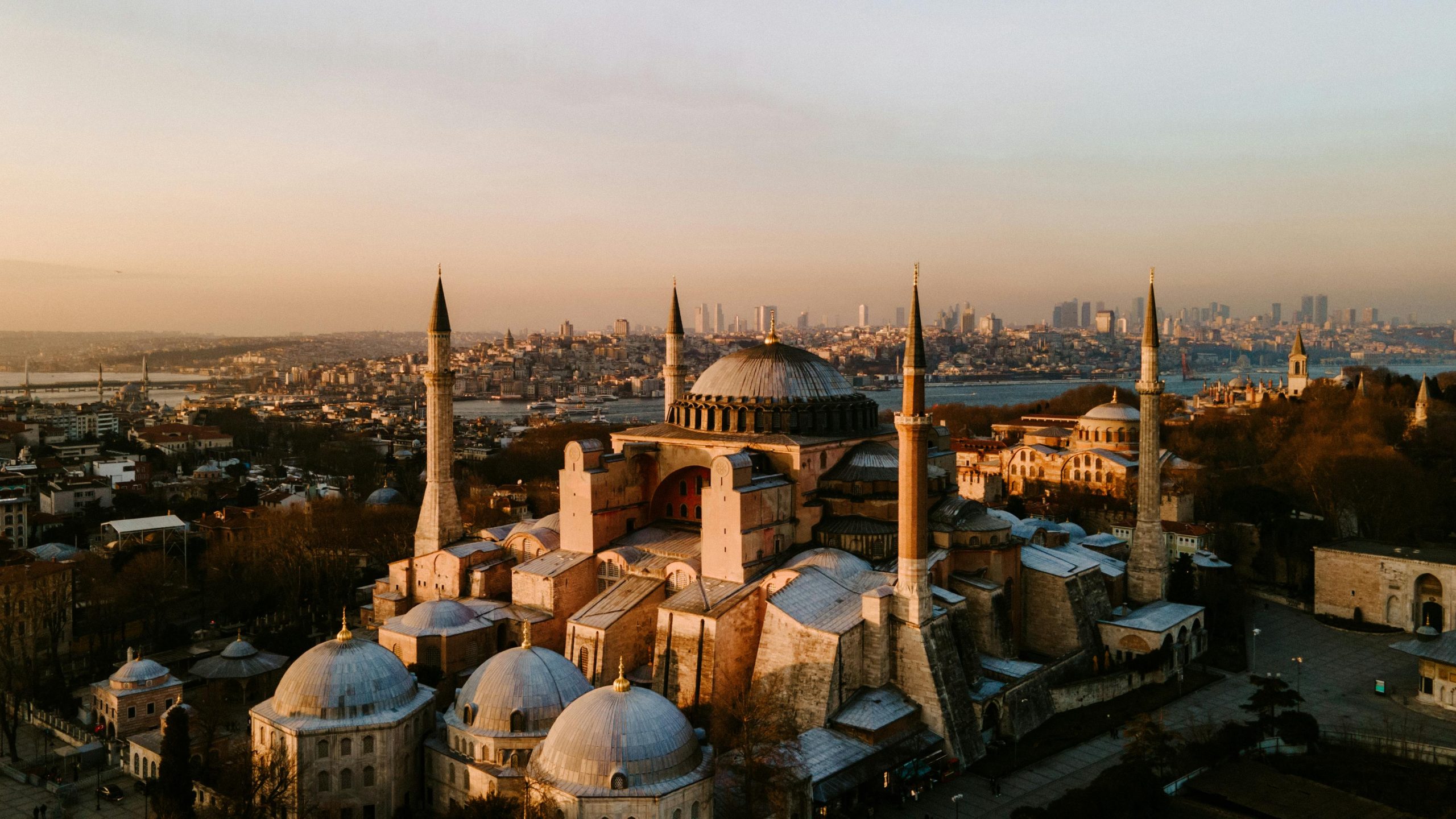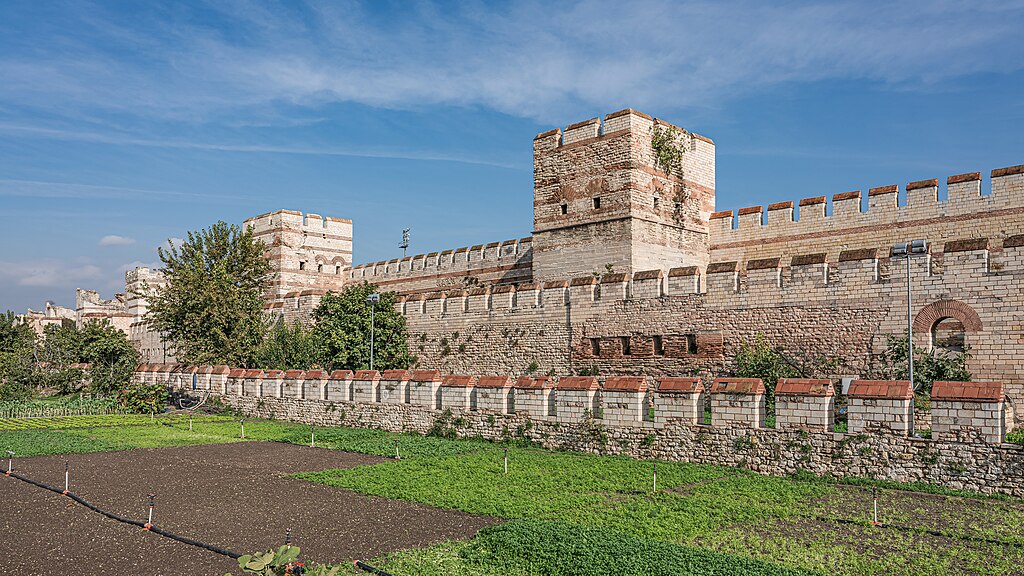Istanbul, Turkey: The Ultimate Travel Guide 2025
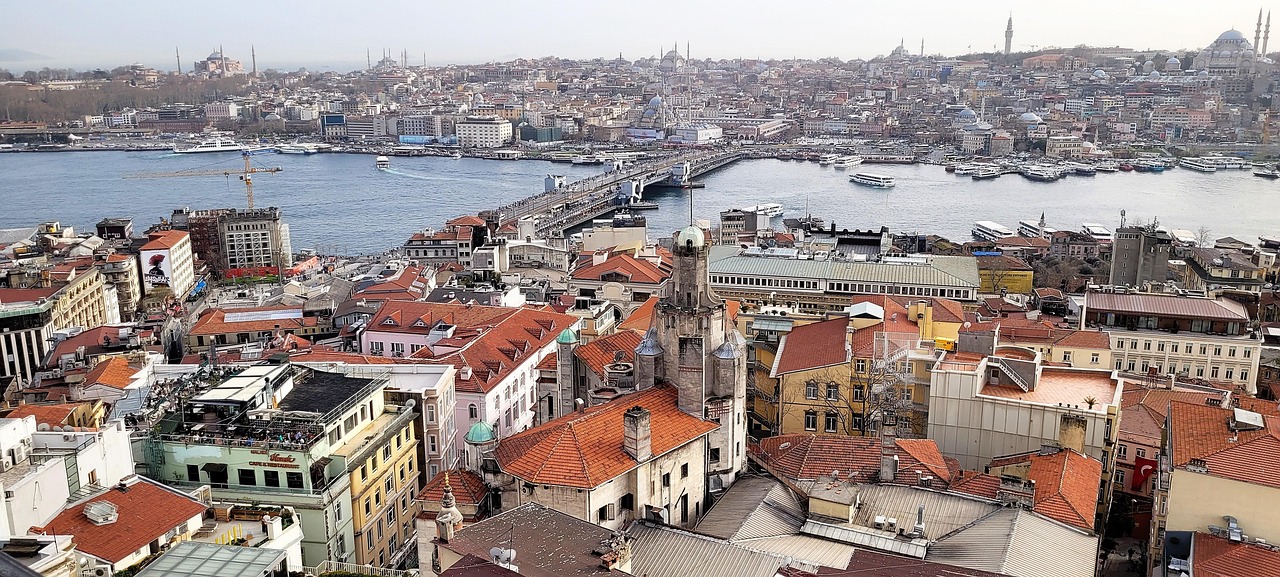
Istanbul, located in the northwest of Turkey, straddles both Europe and Asia across the shimmering Bosphorus Strait. It's a city of striking contrasts — where ancient domes rise beside sleek modern towers and the call to prayer drifts over bustling cafés. The city's position between continents gives it a distinctive rhythm and energy, making it a cultural and commercial heart of the nation. Istanbul is one of the best places to visit in Turkey, offering a blend of timeless heritage and urban sophistication that few cities in the world can match.
Visiting Istanbul is an experience that engages every sense. The aroma of freshly baked simit mingles with the scent of Turkish coffee; ferry horns echo over the water; and the colorful chaos of the Grand Bazaar invites exploration. The city's neighborhoods each have their own charm — from the bohemian streets of Cihangir and the art galleries of Karaköy to the serene courtyards of Üsküdar across the Bosphorus. Whether you're wandering along the waterfront promenades or discovering hidden teahouses, Istanbul offers endless layers of discovery.
For travelers, Istanbul's allure lies not only in its landmarks but in its atmosphere. It's a place that feels both ancient and alive, where every turn reveals a story waiting to be told. The city's hospitality is as warm as its sunlight glinting off the domes and waters, and its culinary scene — from traditional meze to rooftop dining — is unforgettable. Visiting Istanbul is less about ticking off sights and more about feeling the pulse of a city that has shaped, and been shaped by, centuries of culture and connection.
Table of Contents
- History of Istanbul
- Byzantium: From Ancient Colony to Thriving Port
- Constantinople: Capital of the Eastern Roman Empire
- The Ottoman Conquest and Imperial Splendor
- The Modern Republic and a City Reborn
- 42 Best places to See in Istanbul
- Stone of Milion
- Basilica Cistern
- Sultan Ahmet Park
- Hurrem Sultan Hamam
- German Fountain
- Hagia Sophia
- Hagia Irene
- Arasta Bazaar
- Blue Mosque
- Sultanahmet Square
- Turkish and Islamic Arts Museum
- Great Palace Mosaics Museum
- Obelisk of Theodosius
- Serpent Column
- Walled Obelisk
- Istanbul Archaeological Museum
- Theodosius Cistern
- Column of Constantine
- Topkapi Palace
- Boukoleon Palace
- Grand Bazaar
- Spice Bazaar
- Rüstem Pasha Mosque
- Suleymaniye Mosque
- Galata Tower
- Maiden’s Tower
- Dolmabahçe Palace
- Fountain of Ahmed III
- Chora Church
- Gate of Charisius
- Gate of Saint Romanus
- Palace of the Porphyrogenitus
- Palace of Blachernae
- Kaligaria Gate
- Fifth Military Gate
- Gate of the Spring
- Gate of Rhesios
- Yedikule Fortress
- Xylokerkos Gate
- Panorama 1453 History Museum
- Golden Gate
- Marble Tower
- 1 Best Day Trips from Istanbul
- Where to Stay in Istanbul
- Best Time to Visit Istanbul
- Visiting Istanbul in Spring
- Visiting Istanbul in Summer
- Visiting Istanbul in Autumn
- Visiting Istanbul in Winter
- How to get to Istanbul
History of Istanbul
Byzantium: From Ancient Colony to Thriving Port
The story of Istanbul begins around 660 BCE, when Greek settlers from Megara founded a colony on the European side of the Bosphorus known as Byzantium. Its location was a strategic marvel — perfectly placed to control trade routes between the Black Sea and the Mediterranean. Over the centuries, Byzantium prospered as a trading hub, coveted by empires for its wealth and position. The city’s early fortifications and street grid laid the groundwork for the metropolis that would later rise in its place.
Constantinople: Capital of the Eastern Roman Empire
In 330 CE, Emperor Constantine the Great chose Byzantium as the new capital of the Roman Empire, renaming it Constantinople. This marked the city’s transformation into a seat of imperial power, religion, and culture. The city flourished with monumental construction — the Hippodrome became a center of civic life and chariot races, while the Church of Hagia Sophia, completed in 537 under Emperor Justinian I, stood as the crowning architectural achievement of the Byzantine world. For nearly a thousand years, Constantinople remained the heart of the Byzantine Empire, adorned with palaces, forums, and glittering mosaics that symbolized its wealth and spiritual devotion.
The Ottoman Conquest and Imperial Splendor
In 1453, Sultan Mehmed II conquered Constantinople, bringing an end to the Byzantine Empire and ushering in a new era as the capital of the Ottoman Empire. The city, now renamed Istanbul, became one of the most important and diverse metropolises of the Islamic world. Ottoman architects, led by the master Sinan, reshaped the skyline with grand mosques such as the Süleymaniye Mosque and later the Blue Mosque (Sultan Ahmed Mosque). The Topkapi Palace, the sultan’s opulent residence, became a symbol of imperial authority and refined artistry. Istanbul’s bazaars, like the Grand Bazaar and Spice Bazaar, expanded into thriving centers of commerce connecting Asia, Africa, and Europe.
The Modern Republic and a City Reborn
After the fall of the Ottoman Empire following World War I, Istanbul briefly lost its status as capital when the Republic of Turkey was founded in 1923 under Mustafa Kemal Atatürk, who established Ankara as the new political center. Yet Istanbul remained the country’s cultural and economic heart. Through the 20th century, the city modernized rapidly, blending its Ottoman and Byzantine heritage with contemporary architecture and urban growth. Today, landmarks like Hagia Sophia — a church, then a mosque, later a museum, and once again a mosque — embody the city’s complex layers of history. Istanbul stands as a living chronicle of empires and eras, its streets and monuments reflecting more than two millennia of transformation and resilience.
Visiting Istanbul for the first time and wondering what are the top places to see in the city? In this complete guide, I share the best things to do in Istanbul on the first visit. To help you plan your trip, I have also included an interactive map and practical tips for visiting!
This website uses affiliate links which earn a small commission at no additional cost to you.
42 Best places to See in Istanbul
This complete guide to Istanbul not only tells you about the very best sights and tourist attractions for first-time visitors to the city but also provide insights into a few of our personal favorite things to do.
This is a practical guide to visiting the best places to see in Istanbul and is filled with tips and info that should answer all your questions!
Stone of Milion
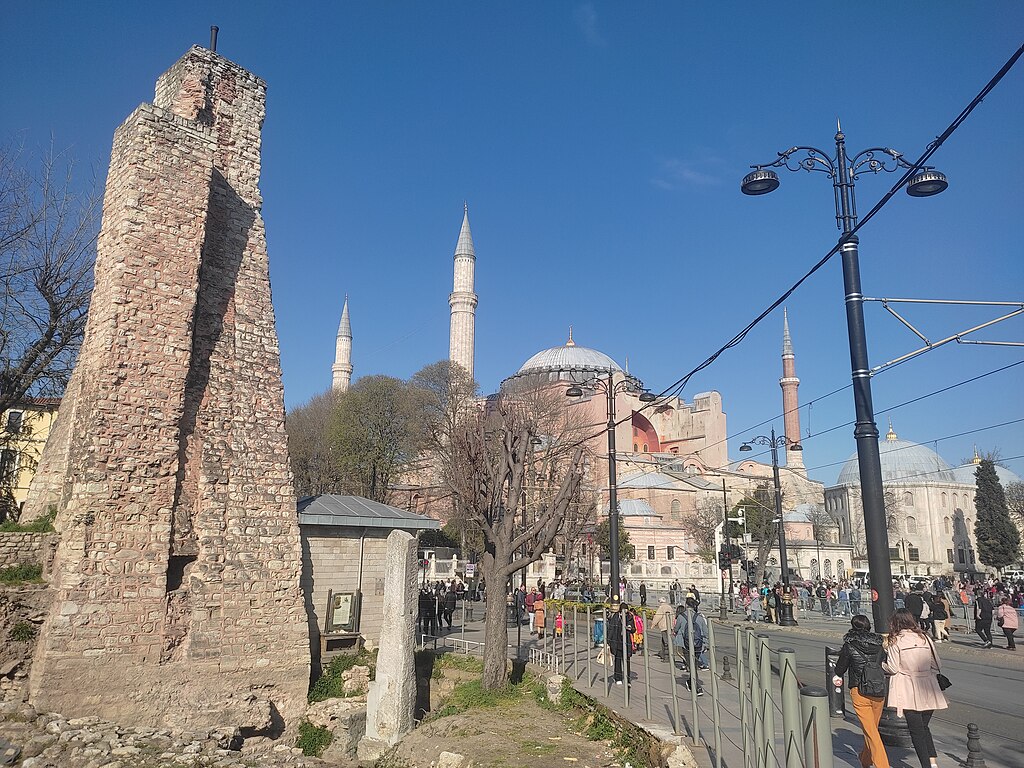
Location: The Stone of Million, Alemdar, Divan Yolu Caddesi, Fatih/İstanbul, Türkiye | Distance: 0.0km
Visiting Stone of Milion
Basilica Cistern

Location: Basilica Cistern, Alemdar, Yerebatan Caddesi, Fatih/İstanbul, Türkiye | Hours: Daily, generally from 9:00 AM to 7:00 PM. | Price: Around €20 (subject to change). | Website | Distance: 0.0km
Visiting Basilica Cistern
Sultan Ahmet Park

Location: Sultan Ahmet Park, Cankurtaran, At Meydanı Cd, Fatih/İstanbul, Türkiye | Distance: 0.1km
Visiting Sultan Ahmet Park
Hurrem Sultan Hamam
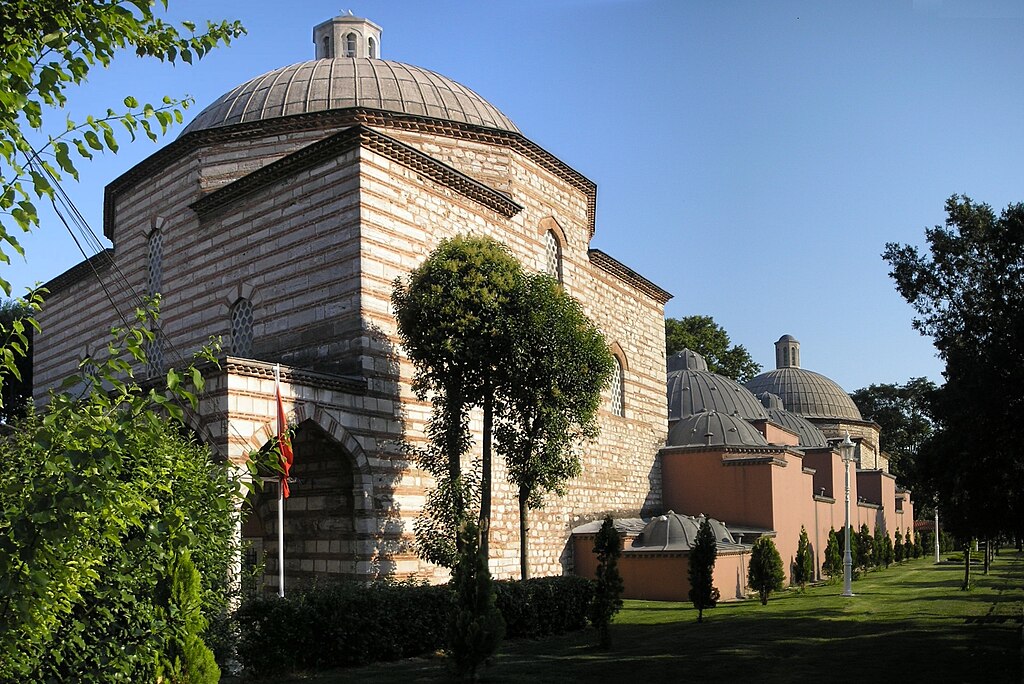
Location: Hürrem Sultan Hamamı, Cankurtaran, Ayasofya Meydanı, Fatih/İstanbul, Türkiye | Hours: Typically 8:00 AM to 10:00 PM daily. | Price: Prices vary by package, starting around €50 and up to €150 for premium treatments. | Distance: 0.1km
Visiting Hurrem Sultan Hamam
German Fountain
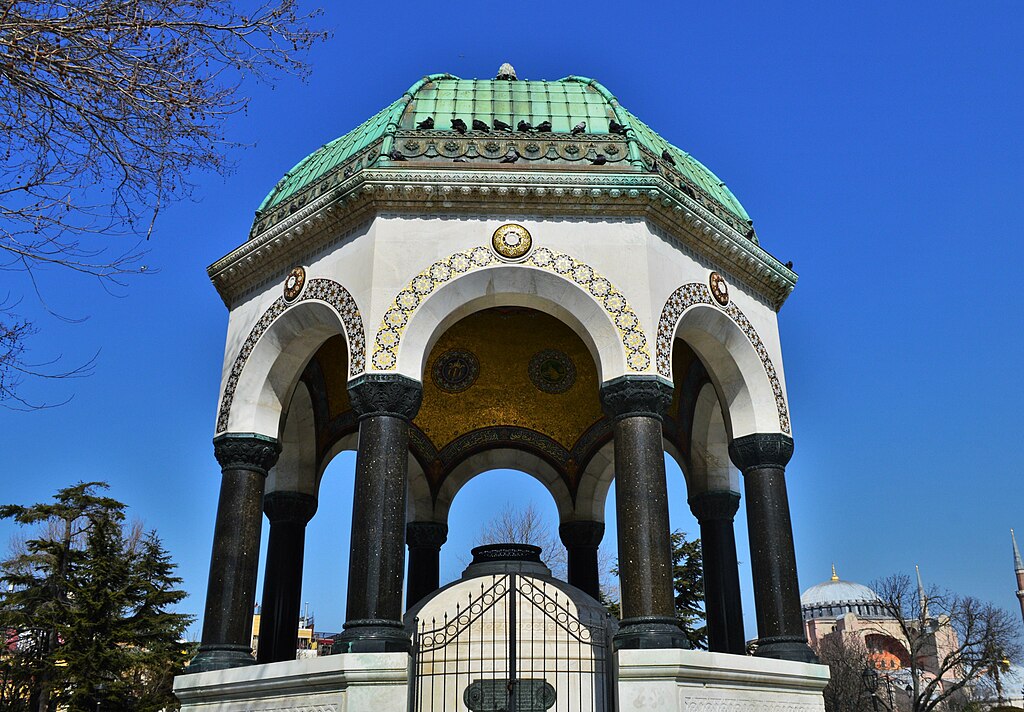
Location: German Fountain, Binbirdirek, At Meydanı Cd, Fatih/İstanbul, Türkiye | Distance: 0.2km
Visiting German Fountain
Hagia Sophia
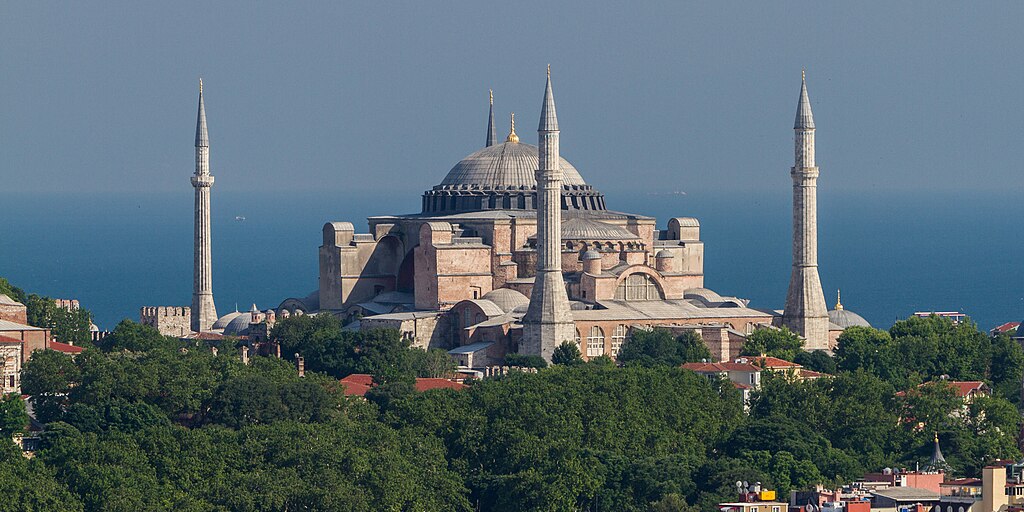
Location: Hagia Sophia, Sultan Ahmet, Ayasofya Meydanı, Fatih/İstanbul, Türkiye | Hours: Tuesday–Sunday, 9:00 AM–6:30 PM (closes earlier in winter); last entry 1 hour before closing. | Price: Around €1.50 (25 TL). | Website | Distance: 0.2km
Visiting Hagia Sophia
Hagia Irene
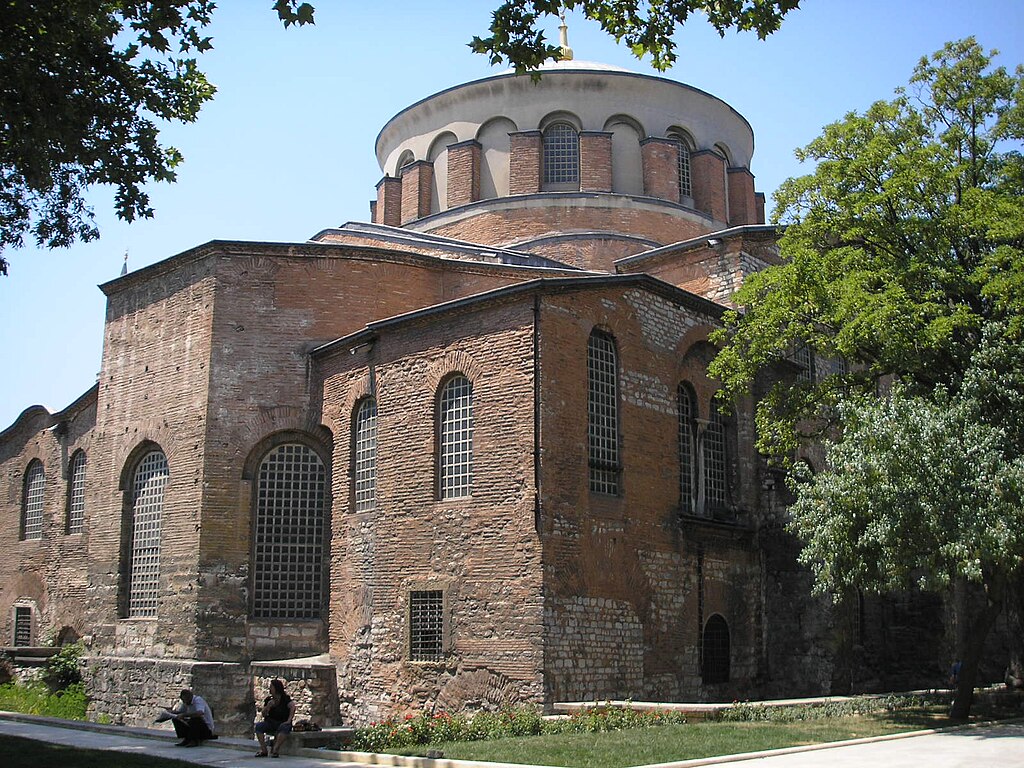
Location: Hagia Irene, Cankurtaran, Topkapı Palace, Fatih/İstanbul, Türkiye | Distance: 0.3km
Visiting Hagia Irene
Arasta Bazaar

Location: Arasta Bazaar, Sultan Ahmet, Mimar Mehmet Ağa Caddesi, Fatih/İstanbul, Türkiye | Hours: Typically 9:00 AM to 7:00 PM daily. | Price: Free entry. | Distance: 0.3km
Visiting Arasta Bazaar
Blue Mosque
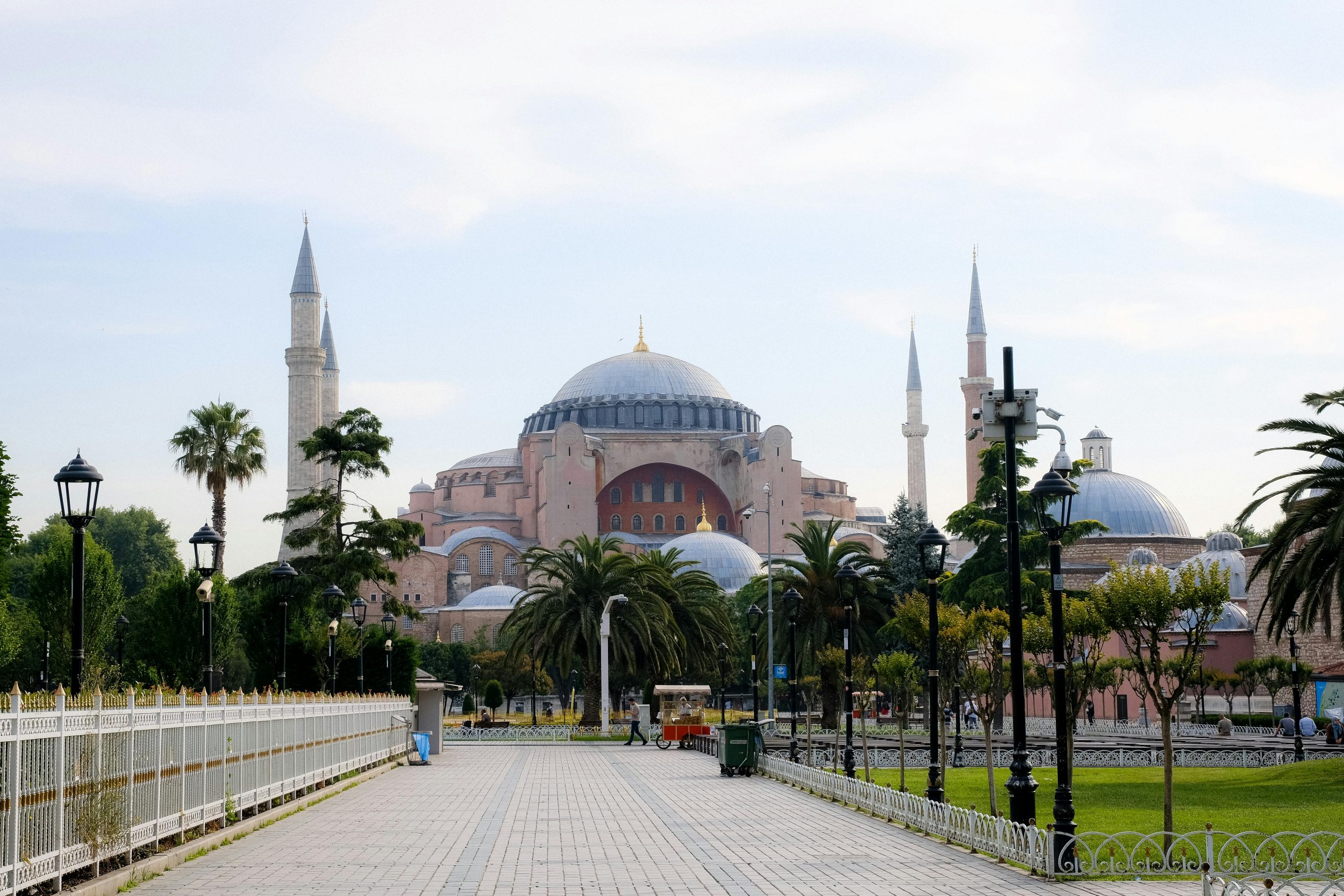
Location: Blue Mosque, Cankurtaran, At Meydanı Cd, Fatih/İstanbul, Türkiye | Distance: 0.3km
Visiting Blue Mosque
Sultanahmet Square

Location: Sultanahmet Square, Binbirdirek, Sultan Ahmet Parkı, Fatih/İstanbul, Türkiye | Distance: 0.3km
Visiting Sultanahmet Square
Turkish and Islamic Arts Museum
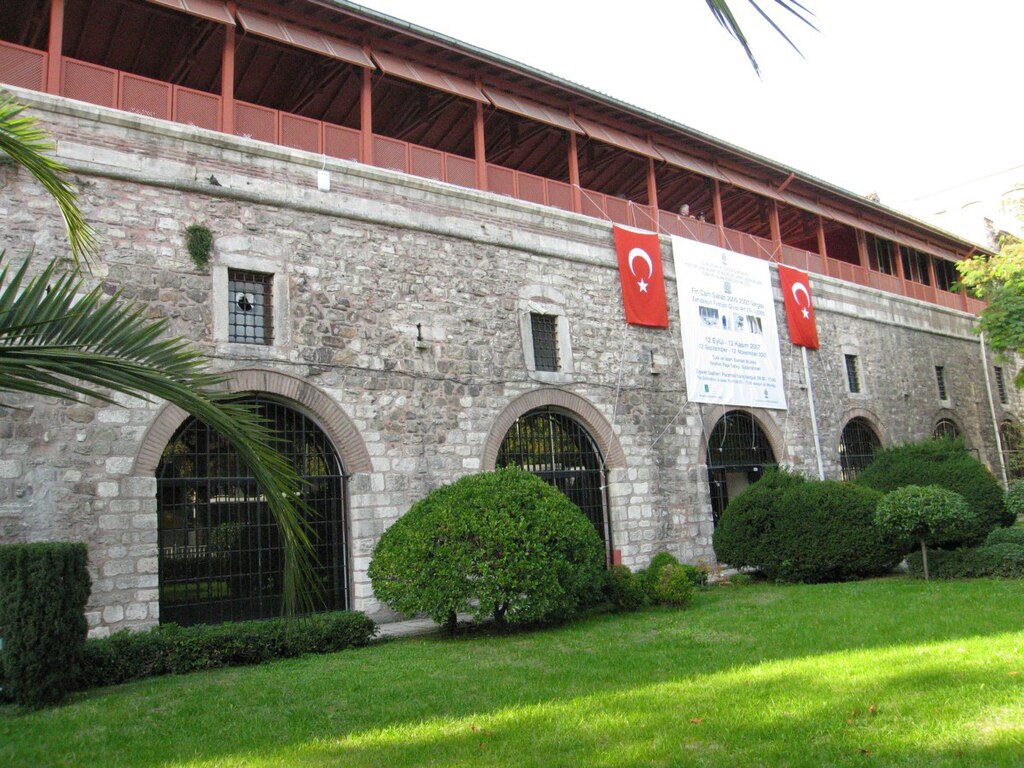
Location: Turkish & Islamic Arts Museum, Binbirdirek, At Meydanı Cd, Fatih/İstanbul, Türkiye | Distance: 0.4km
Visiting Turkish and Islamic Arts Museum
Great Palace Mosaics Museum

Location: Great Palace Mosaics Museum, Sultan Ahmet, Torun Sokak, Fatih/İstanbul, Türkiye | Distance: 0.4km
Visiting Great Palace Mosaics Museum
Obelisk of Theodosius
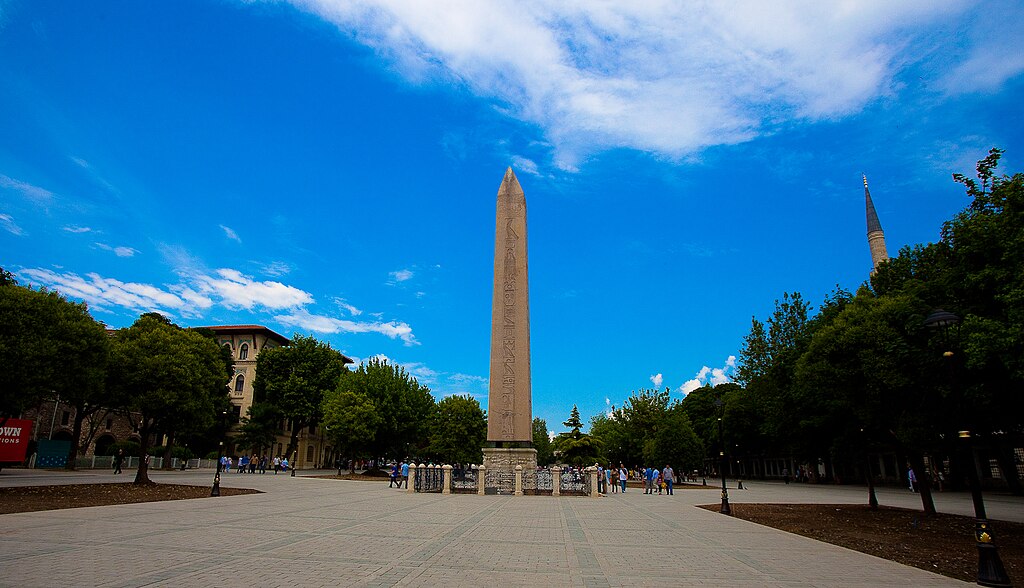
Location: Obelisk of Theodosius, Binbirdirek, Fatih/İstanbul, Türkiye | Hours: Accessible 24 hours daily as part of Sultanahmet Square. | Price: Free | Distance: 0.4km
Visiting Obelisk of Theodosius
Serpent Column

Location: Serpent Column, Binbirdirek, At Meydanı Cd, Fatih/İstanbul, Türkiye | Hours: Accessible 24 hours as part of Sultanahmet Square. | Price: Free | Distance: 0.4km
Visiting Serpent Column
Walled Obelisk

Location: Obélisque « muré », Binbirdirek, Sultan Ahmet Parkı, Fatih/İstanbul, Türkiye | Hours: Accessible at all times as part of Sultanahmet Square. | Price: Free | Distance: 0.4km
Visiting Walled Obelisk
Istanbul Archaeological Museum

Location: Istanbul Archaeological Museums, Cankurtaran, Fatih/İstanbul, Türkiye | Hours: Daily 9:00 AM–5:00 PM (until 7:00 PM from April to October); last ticket sold 30 minutes before closing. | Price: Approximately €0.30 (10 TL). | Website | Distance: 0.5km
Visiting Istanbul Archaeological Museum
Theodosius Cistern
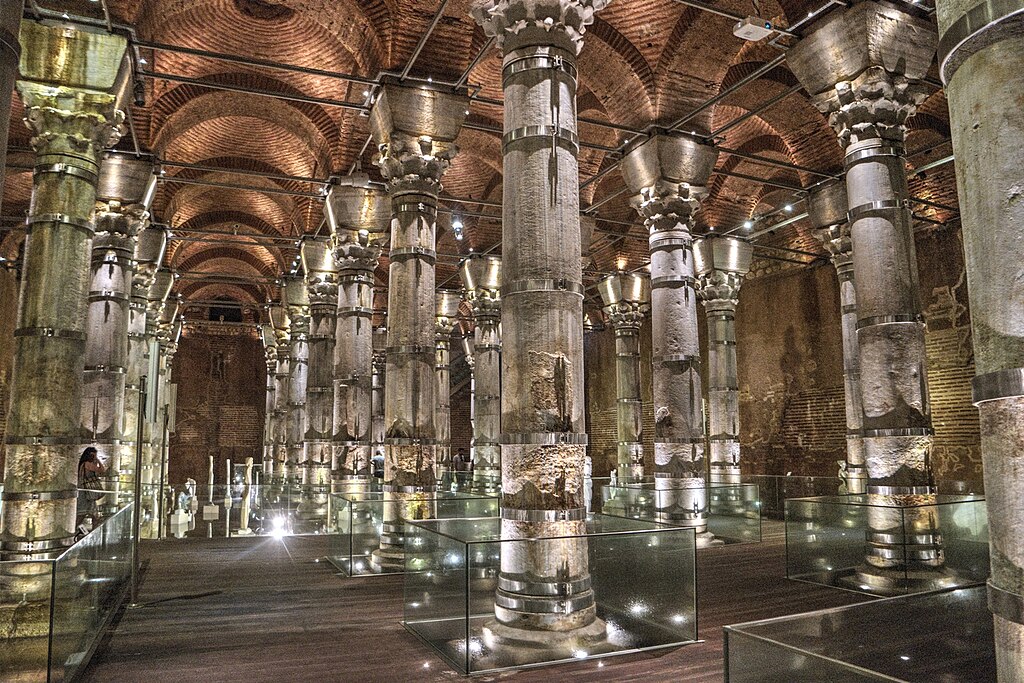
Location: Theodosius Cistern, Binbirdirek, Piyer Loti Caddesi, Fatih/İstanbul, Türkiye | Hours: Daily from 9:00 AM to 6:00 PM. | Price: Around €7. | Website | Distance: 0.5km
Visiting Theodosius Cistern
Column of Constantine

Location: Column of Constantine, Mollafenari, Vezirhan Caddesi, Fatih/İstanbul, Turkey | Distance: 0.6km
Visiting Column of Constantine
Topkapi Palace
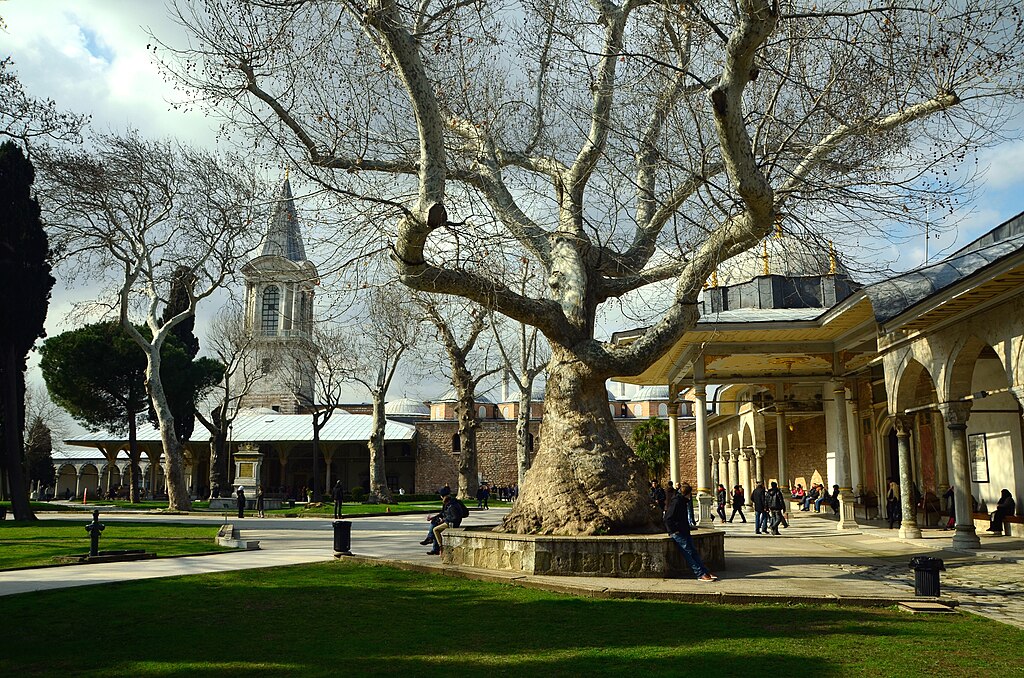
Location: Topkapi Palace Museum, Cankurtaran, Babı Hümayun Cad, Fatih/İstanbul, Türkiye | Distance: 0.6km
Visiting Topkapi Palace
Boukoleon Palace

Location: Boukoleon Palace, Sultan Ahmet, Kennedy Avenue, Fatih/İstanbul, Türkiye | Distance: 0.7km
Visiting Boukoleon Palace
Grand Bazaar
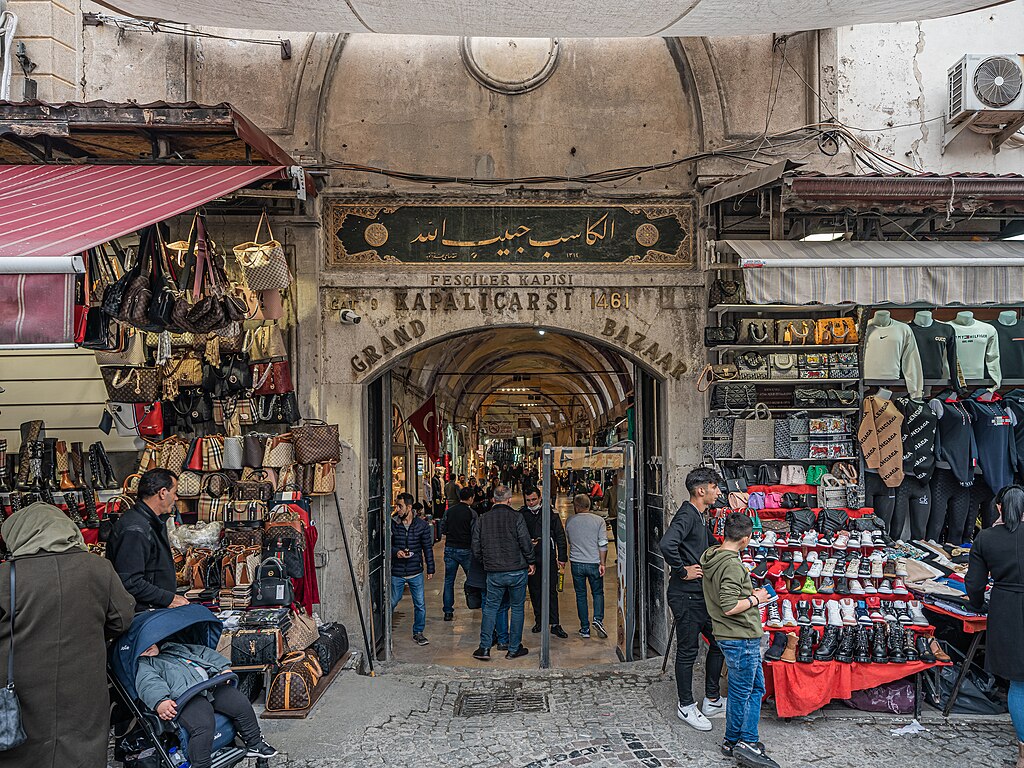
Location: Grand Bazaar, Beyazıt, Fatih/İstanbul, Türkiye | Hours: Monday–Saturday, 9:00 AM–7:00 PM; closed Sundays and religious holidays. | Price: Free | Distance: 0.9km
Visiting Grand Bazaar
Spice Bazaar
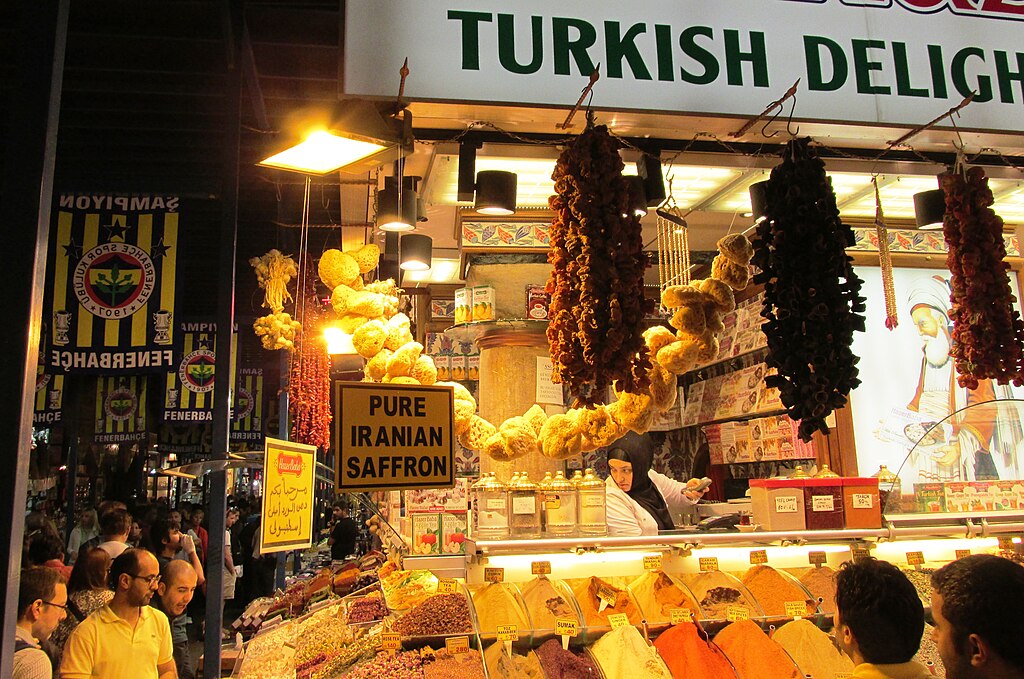
Location: Spice Bazaar, Rüstem Paşa, Fatih/İstanbul, Türkiye | Distance: 1.1km
Visiting Spice Bazaar
Rüstem Pasha Mosque
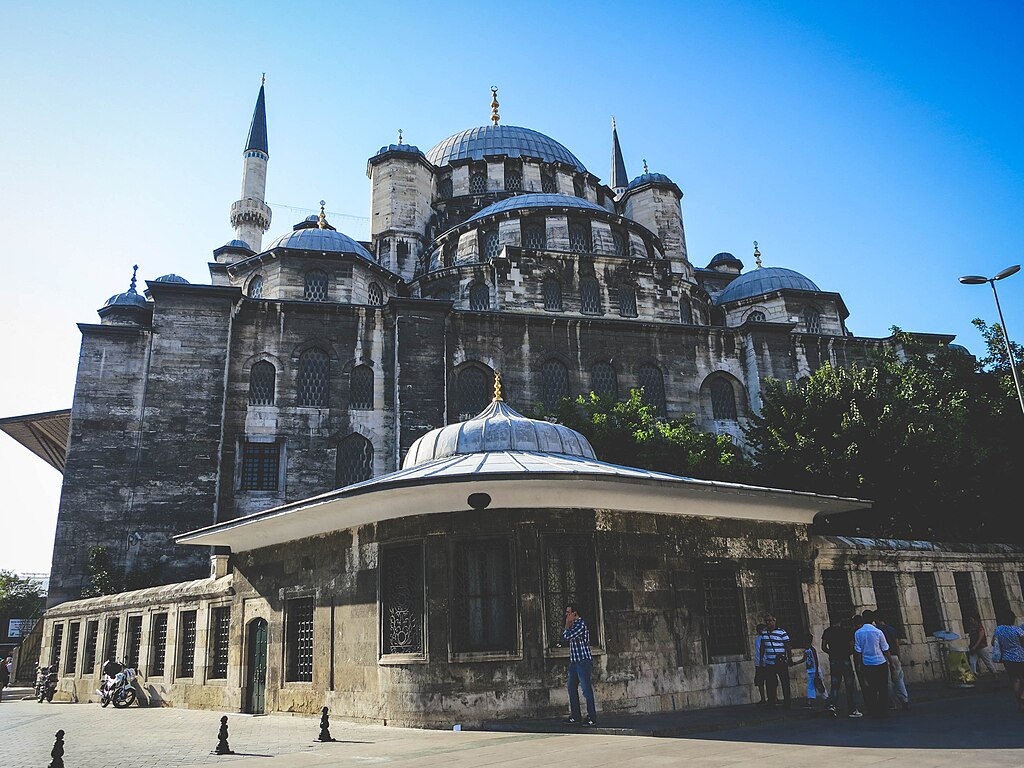
Location: Rustem Pasha Mosque, Rüstem Paşa, Hasırcılar Caddesi, Fatih/İstanbul, Türkiye | Hours: Open daily except during prayer times. | Price: Free | Distance: 1.3km
Visiting Rüstem Pasha Mosque
Suleymaniye Mosque
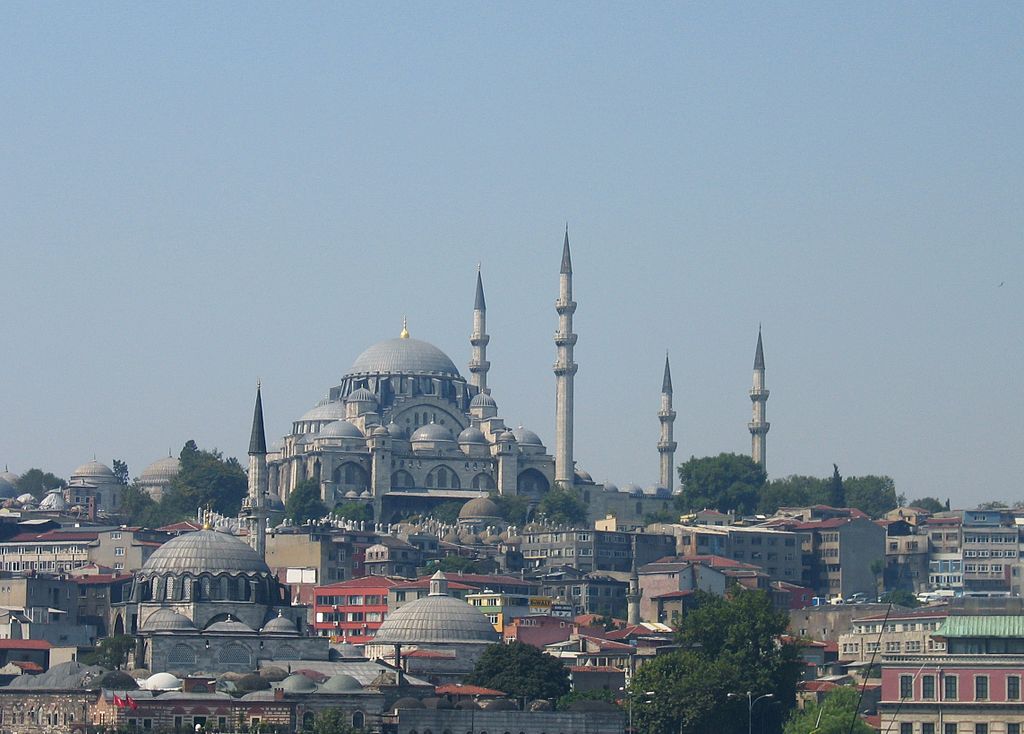
Location: Suleymaniye Mosque, Süleymaniye, Profesör Sıddık Sami Onar Caddesi, Fatih/İstanbul, Türkiye | Distance: 1.5km
Visiting Suleymaniye Mosque
Galata Tower

Location: Galata Tower, Bereketzade, Beyoğlu/İstanbul, Türkiye | Hours: Daily, 8:30 AM–11:00 PM. | Price: Around €15 per person. | Distance: 2.0km
Visiting Galata Tower
Maiden’s Tower

Location: Maiden's Tower, Salacak, Üsküdar/İstanbul, Türkiye | Distance: 2.6km
Visiting Maiden’s Tower
Dolmabahçe Palace

Location: Dolmabahçe Palace, Vişnezade, Dolmabahçe Caddesi, Beşiktaş/İstanbul, Türkiye | Distance: 3.7km
Visiting Dolmabahçe Palace
Fountain of Ahmed III

Location: Mimar Sinan, Fountain of Ahmed III, Üsküdar/İstanbul, Türkiye | Hours: Accessible 24 hours daily. | Price: Free; the fountain is outdoors. | Distance: 3.7km
Visiting Fountain of Ahmed III
Chora Church
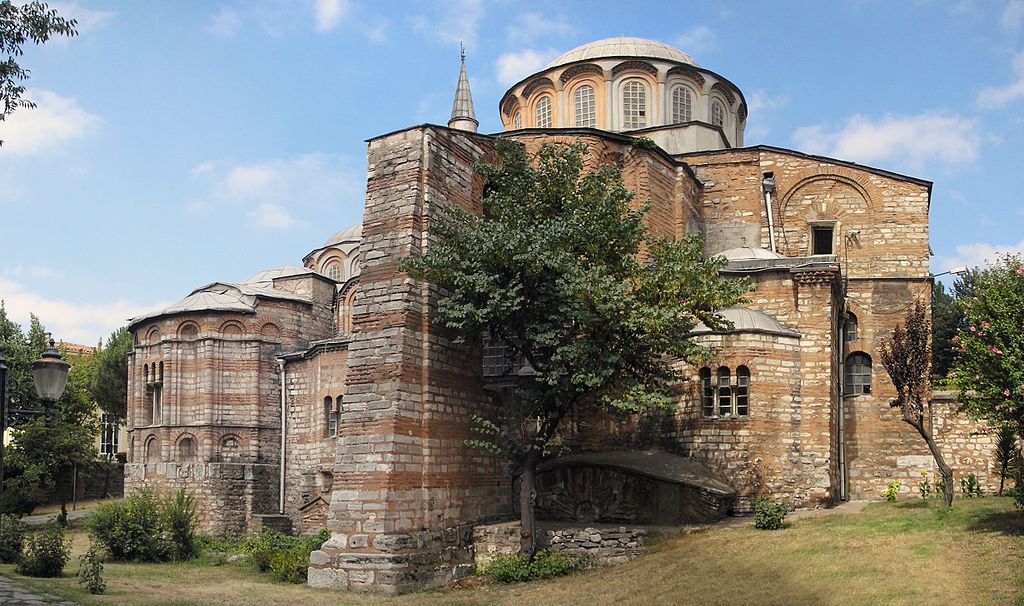
Location: Kariye Mosque, Dervişali, Kariye Cami Sokak, Fatih/İstanbul, Türkiye | Distance: 4.2km
Visiting Chora Church
Gate of Charisius
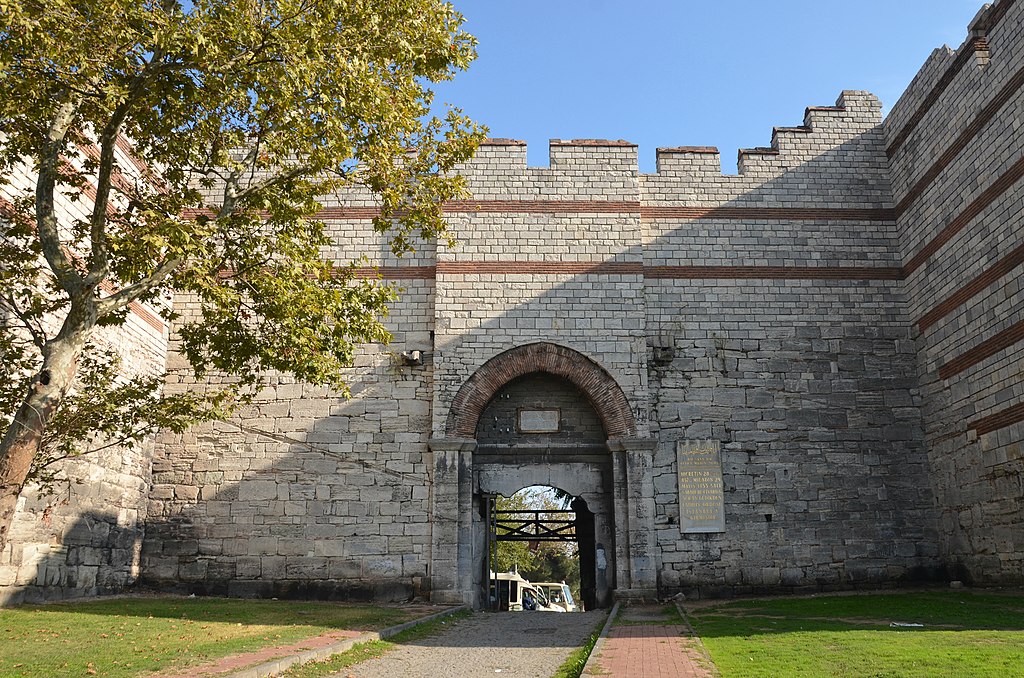
Location: Edirnekapı, Dervişali, Fatih/İstanbul, Türkiye | Distance: 4.2km
Visiting Gate of Charisius
Gate of Saint Romanus
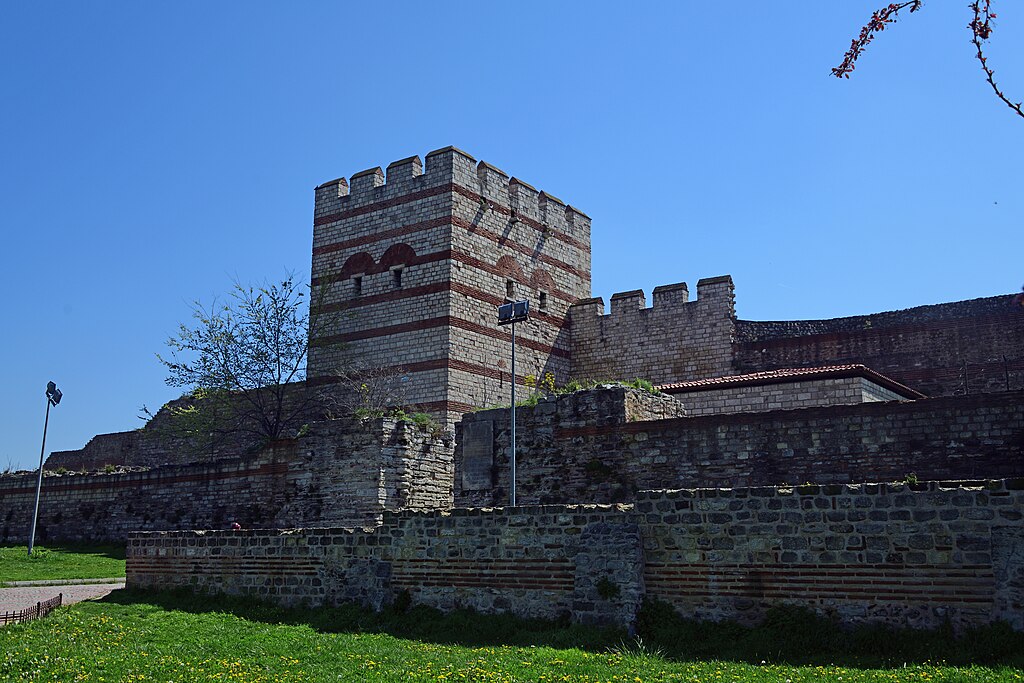
Location: Topkapı, Fatih/İstanbul, Türkiye | Distance: 4.2km
Visiting Gate of Saint Romanus
Palace of the Porphyrogenitus
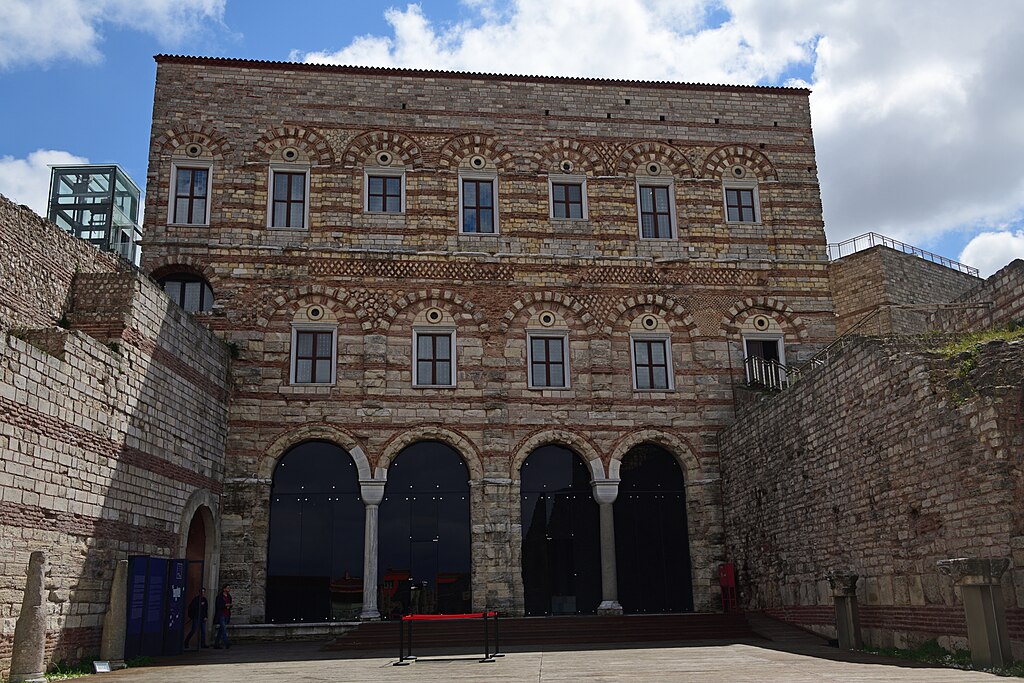
Location: Palace of the Porphyrogenitus, Ayvansaray, Fatih/İstanbul, Türkiye | Distance: 4.3km
Visiting Palace of the Porphyrogenitus
Palace of Blachernae
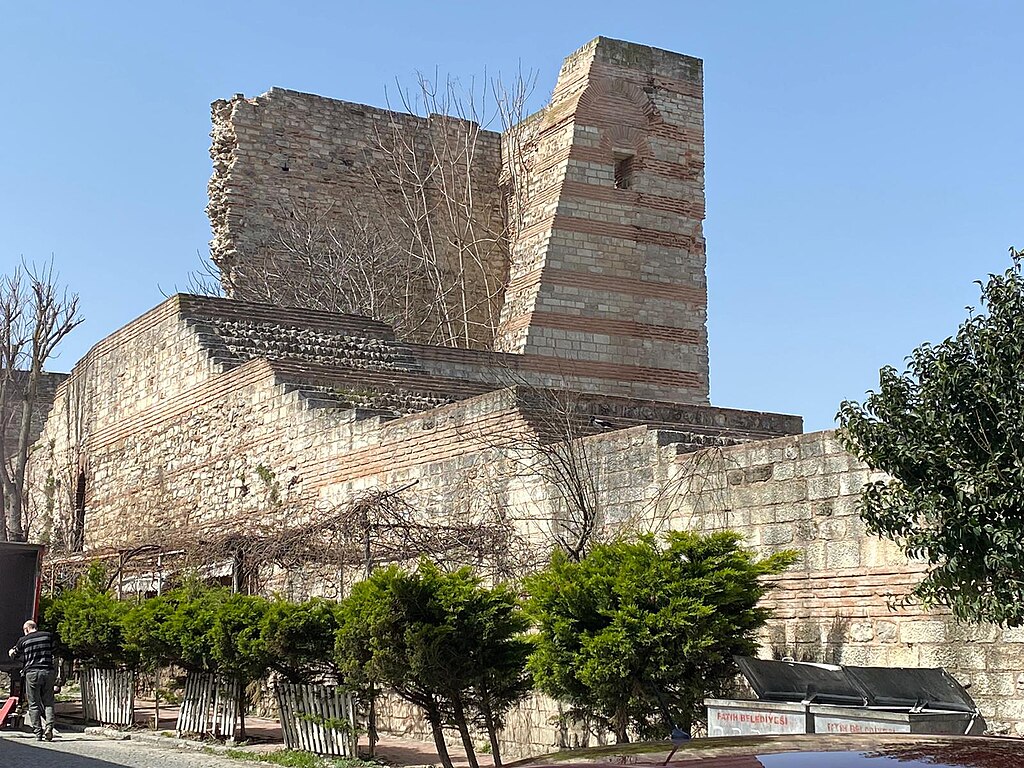
Location: Palace of Blachernae, Ayvansaray, Fatih/İstanbul, Türkiye | Distance: 4.3km
Visiting Palace of Blachernae
Kaligaria Gate

Location: Eğrikapı, Ayvansaray, Eğrikapı Cd., Fatih/İstanbul, Türkiye | Distance: 4.5km
Visiting Kaligaria Gate
Fifth Military Gate

Location: Topkapı, Sulukule Caddesi, Fatih/İstanbul, Türkiye | Distance: 4.5km
Visiting Fifth Military Gate
Gate of the Spring

Location: Silivrikapı, Hisaraltı Cd. No:1, 34107 Fatih/İstanbul, Türkiye | Distance: 4.7km
Visiting Gate of the Spring
Gate of Rhesios
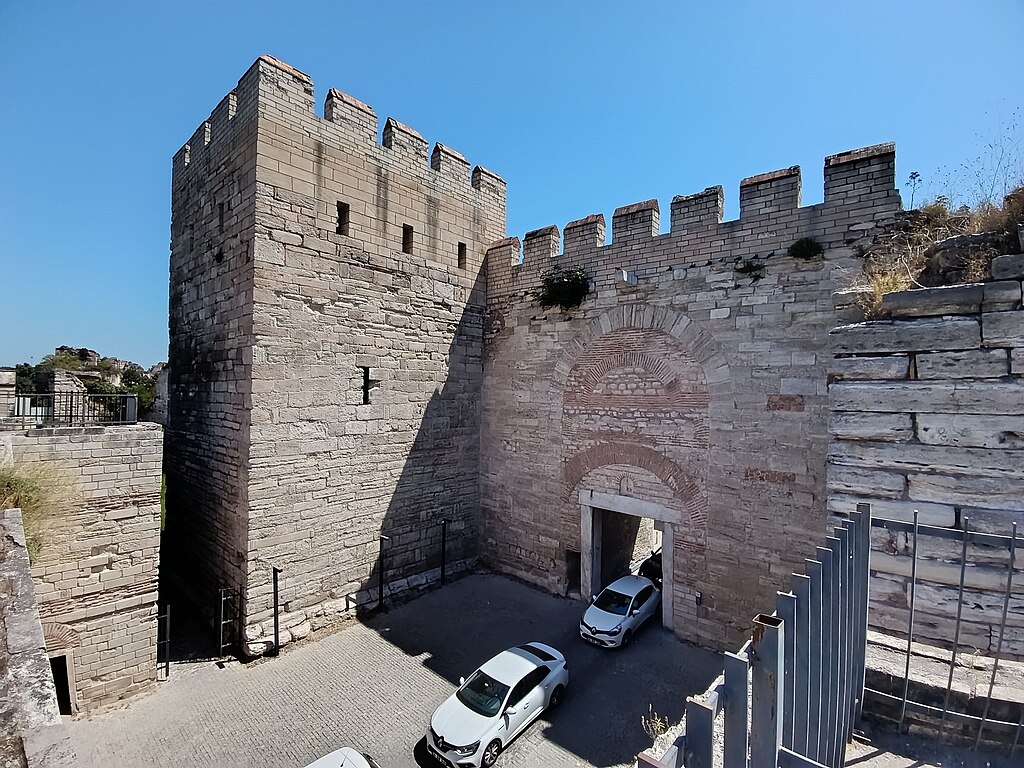
Location: Mevlânakapı Kapısı, Mevlanakapı, Mevlanakapı Caddesi, Fatih/İstanbul, Türkiye | Distance: 4.8km
Visiting Gate of Rhesios
Yedikule Fortress
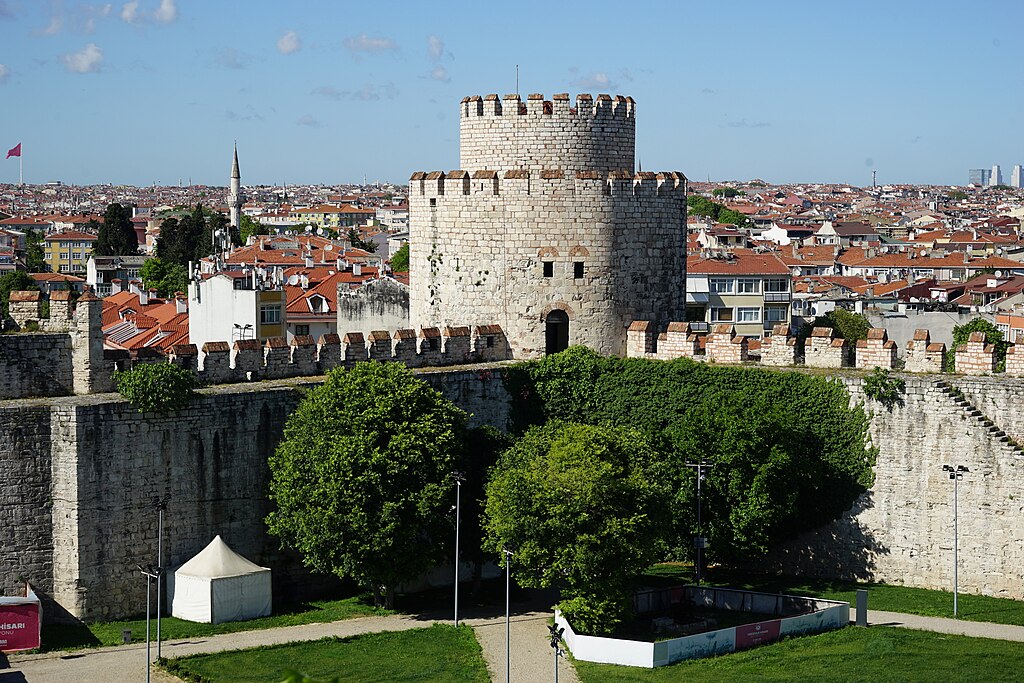
Location: Yedikule Fortress, Yedikule, Yedikule Meydanı Sokak, Fatih/İstanbul, Türkiye | Hours: Daily from 9 a.m. to 6 p.m. (closed Mondays). | Price: Around 5 € (approximately 175 TRY); tickets sold on-site. | Distance: 4.9km
Visiting Yedikule Fortress
Xylokerkos Gate
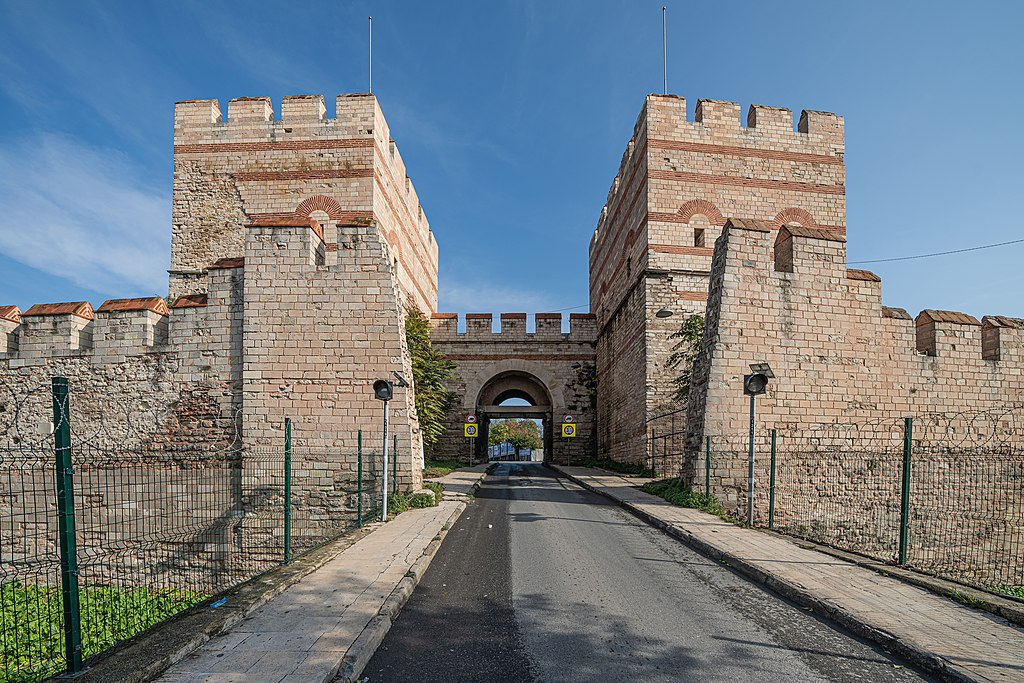
Location: Belgrade Gate, Sümbül Efendi, Fatih/İstanbul, Türkiye | Distance: 4.9km
Visiting Xylokerkos Gate
Panorama 1453 History Museum

Location: Panorama 1453 History Museum, Merkez Efendi Mahallesi, Topkapı Kültür Park İçi Yolu, Zeytinburnu/İstanbul, Türkiye | Distance: 5.0km
Visiting Panorama 1453 History Museum
Golden Gate
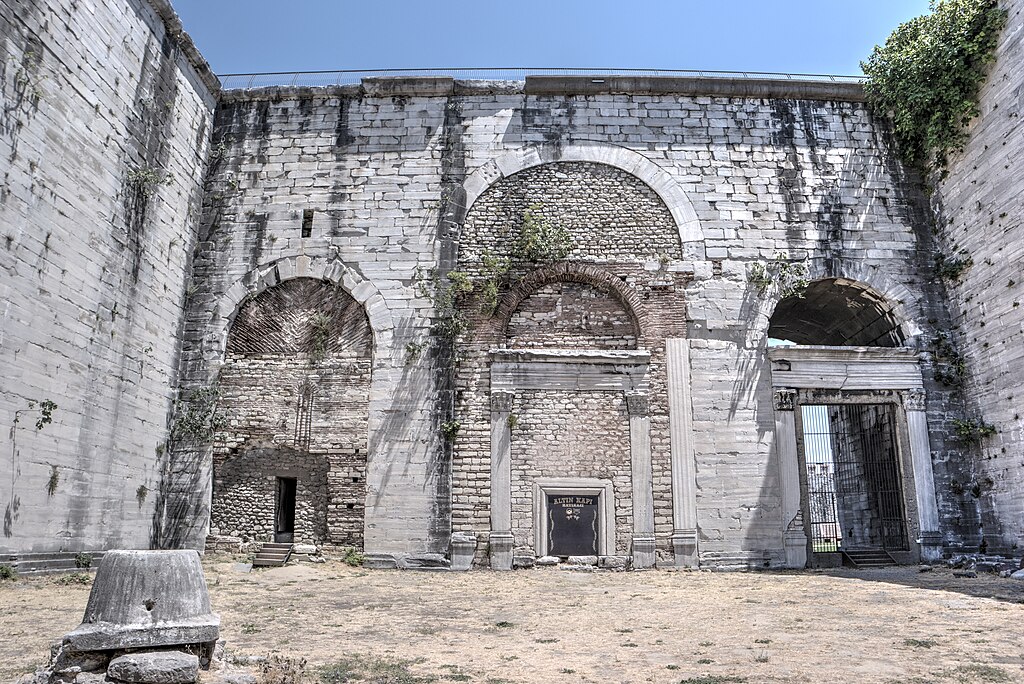
Location: Golden Gate, Yedikule, Fatih/İstanbul, Türkiye | Hours: The gate can be viewed at all times; fortress hours vary. | Price: Free | Distance: 5.0km
Visiting Golden Gate
Marble Tower
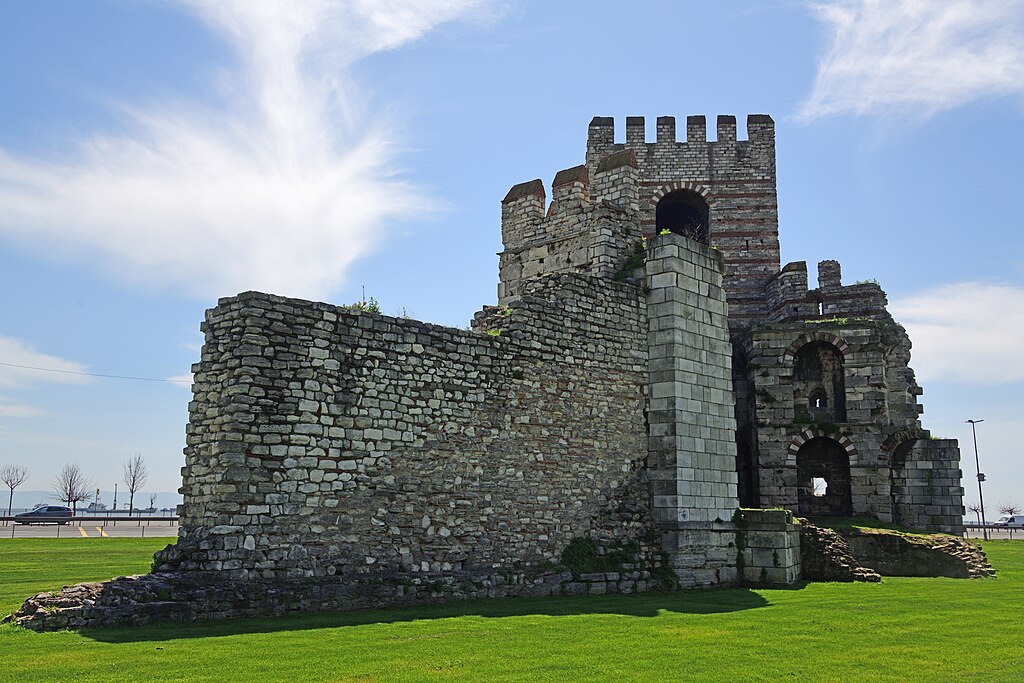
Location: Marble Tower, İçi Yolları, Yedikule, Koca Mustafa Paşa Parkı, Fatih/İstanbul, Türkiye | Distance: 5.3km
Visiting Marble Tower
Best Day Trips from Istanbul
A day trip from Istanbul offers the perfect opportunity to escape the urban rhythm and discover the surrounding region's charm. Whether you're drawn to scenic countryside, historic villages, or cultural landmarks, the area around Istanbul provides a variety of easy-to-reach destinations ideal for a one-day itinerary. If you are looking to rent a car in Turkey I recommend having a look at Discover Cars, first, as they compare prices and review multiple car rental agencies for you.
Rumeli Fortress
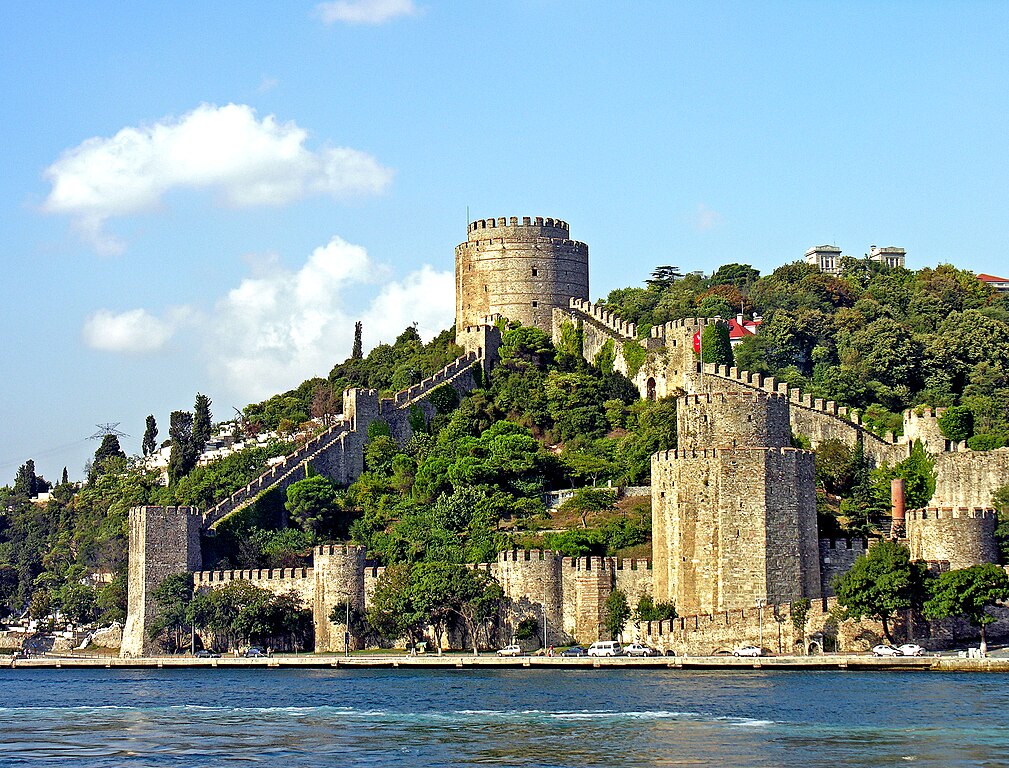
Location: Rumeli Fortress, Rumeli Hisarı, Yahya Kemal Caddesi, Sarıyer/İstanbul, Türkiye | Distance: 10.8km
Visiting Rumeli Fortress
Where to Stay in Istanbul
Istanbul offers a remarkable range of neighborhoods to stay in, each providing its own distinctive feel and access to the city’s many treasures. For first-time visitors, Sultanahmet is the heart of old Istanbul and the best choice for those wanting to be within walking distance of iconic landmarks such as Hagia Sophia, the Blue Mosque, and Topkapi Palace. Here, you can stay at Four Seasons Hotel Istanbul at Sultanahmet, a beautifully restored Ottoman-era building that combines luxury with historical charm. Those seeking boutique comfort might prefer Hotel Amira Istanbul, which offers warm hospitality, elegant interiors, and a rooftop terrace overlooking the Sea of Marmara. Sultanahmet’s quiet, cobbled streets and proximity to major attractions make it ideal for cultural explorers.
For travelers who enjoy vibrant nightlife, art, and dining, the Beyoğlu district on the European side is the place to be. Centered around Istiklal Street and Taksim Square, it’s home to countless cafés, music venues, and galleries. The area’s mix of neoclassical architecture and contemporary energy defines modern Istanbul. A great option here is The Marmara Taksim, offering panoramic views over the Bosphorus and a prime location for exploring the city’s lively nightlife. Alternatively, Pera Palace Hotel is a historic icon that has hosted generations of writers, artists, and royals since 1892, offering a timeless atmosphere filled with character and refinement.
Across the Bosphorus on the Asian side, Kadıköy and Üsküdar present a more local and relaxed experience. Kadıköy is known for its creative scene, markets, and excellent restaurants, attracting both locals and long-term visitors who prefer a less touristy base. Üsküdar, meanwhile, provides beautiful views back toward the European skyline and easy ferry access. Staying here offers insight into everyday Istanbul life, with quieter streets and a welcoming ambiance. With a growing number of boutique accommodations, this side of the city suits travelers seeking authenticity and a slower pace while remaining just a ferry ride from the main attractions.
Using the our Hotel and Accomodation map, you can compare hotels and short-term rental accommodations in Istanbul. Simply insert your travel dates and group size, and you’ll see the best deals for your stay.
Istanbul Accommodation Map
Best Time to Visit Istanbul
Visiting Istanbul in Spring (Best)
Spring, from March to May, is the most beautiful time to visit Istanbul. The city awakens with mild weather, blooming tulips, and lively outdoor scenes. Temperatures average between 15°C and 25°C, perfect for strolling along the Bosphorus or exploring historic districts like Sultanahmet and Beyoğlu without the heat or crowds of summer. A highlight of the season is the Istanbul Tulip Festival, held throughout April, when parks such as Emirgan Grove and Gülhane Park are filled with millions of vibrant tulips — a tradition that reflects the city’s Ottoman heritage. Spring also brings a renewed energy to the city’s markets, rooftop terraces, and ferry rides, offering visitors the perfect mix of comfort and atmosphere.
Visiting Istanbul in Summer
From June to August, Istanbul experiences its warmest weather, with temperatures often reaching 30°C or more. The long daylight hours make it ideal for evening walks and sunset cruises along the Bosphorus. While sightseeing can be hot during midday, many visitors take advantage of the city’s waterfront cafés, shaded courtyards, and nearby beaches along the Sea of Marmara or the Princes’ Islands. Summer is also a festive season, marked by open-air concerts, cultural performances, and the Istanbul Jazz Festival, which attracts international artists. Despite the heat, the city buzzes with life late into the night, offering an unforgettable atmosphere for those who enjoy vibrant urban energy.
Visiting Istanbul in Autumn
Autumn, from September to November, brings a calm and reflective charm to Istanbul. Temperatures cool to between 15°C and 25°C, and the golden light of the season gives the city’s domes and minarets a warm glow. It’s a perfect time for museum visits, Bosphorus cruises, and leisurely exploration of Istanbul’s many neighborhoods. The crowds of summer fade, allowing for a more relaxed pace at landmarks like Hagia Sophia and Topkapi Palace. Food lovers will also find this a rewarding time, as seasonal dishes and fresh fish from the Bosphorus feature prominently in restaurants.
Visiting Istanbul in Winter
Winter, from December to February, brings cooler days and the occasional snowfall that adds a rare, magical quiet to Istanbul’s skyline. Temperatures usually range from 5°C to 10°C, and although some days are overcast, this is a great season for travelers seeking fewer crowds and lower prices. Visiting Istanbul in winter means enjoying its indoor treasures — from the Grand Bazaar and the hammams to its many museums and mosques. The festive lights around New Year and the cozy cafés serving salep (a warm milk drink with cinnamon) make the season feel intimate and atmospheric, offering a different yet memorable perspective of the city.
Annual Weather Overview
- January 10°C 54°F
- February 11°C 55°F
- March 12°C 57°F
- April 16°C 65°F
- May 20°C 72°F
- June 26°C 83°F
- July 29°C 88°F
- August 28°C 87°F
- September 24°C 79°F
- October 21°C 73°F
- November 17°C 67°F
- December 11°C 56°F
How to get to Istanbul
Getting to Istanbul by Air
Nearest airports: The main gateway to Istanbul is Istanbul Airport (IST), located about 40 km northwest of the city center. It is one of the busiest airports in the world, offering extensive international and domestic connections. Turkish Airlines operates a vast global network from here, linking Istanbul to cities across Europe, Asia, Africa, and the Americas. A second airport, Sabiha Gökçen International Airport (SAW), lies on the Asian side of the city and primarily handles low-cost and regional flights. For the best deals and a seamless booking experience, check out these flights to on Booking.com.
Airport transfers: Both airports are well-connected to central Istanbul. From Istanbul Airport, travelers can take the Havaist airport bus service, taxis, or private transfers, while the metro line (M11) provides a direct route to the city. From Sabiha Gökçen, buses and taxis serve central districts such as Kadıköy and Taksim, and a new metro extension connects the airport to the main rail network.
Getting to Istanbul by Train
Istanbul is connected to Turkey's high-speed rail network and several international routes. The city's main rail terminal for intercity and high-speed trains is Söğütlüçeşme Station on the Asian side, while Halkalı Station serves trains arriving from Europe. Passengers traveling within Turkey can reach Istanbul from Ankara, Eskişehir, and Konya on modern high-speed trains that offer comfortable and efficient service.
For international travelers, there are rail links from Sofia and Bucharest, and new services are being developed to improve regional connections. Within the city, Marmaray — an undersea rail tunnel — links the European and Asian sides, making travel between stations quick and seamless.
You can use the official TCDD Taşımacılık website to check schedules, compare routes, and purchase tickets for Turkey's national and regional trains operated by TCDD. For a more streamlined experience (especially if you prefer an English interface or want to compare across countries), we recommend using Omio, which allows you to easily compare prices, schedules, and book train tickets across Turkey and the rest of Europe — all in one place.
Getting to Istanbul by Car
Istanbul is accessible by road from all major regions of Turkey and neighboring countries. The city is connected by modern highways such as the O-7 Northern Marmara Motorway, which provides a smooth approach from both Europe and Anatolia via the Yavuz Sultan Selim Bridge. From Greece or Bulgaria, drivers can cross the border at Edirne and follow the E80 motorway into the city.
Traffic in Istanbul can be dense, especially during rush hours, and parking is often limited in central areas. Many travelers prefer to leave their car at a hotel or use public transport once in the city. Tolls apply on bridges and motorways, paid electronically through the HGS system.
If you are looking to rent a car in Turkey I recommend having a look at Discover Cars, first, as they compare prices and review multiple car rental agencies for you.Travelling around Istanbul
Istanbul's transport system is extensive and varied, offering a mix of metro, tram, ferry, and bus services. The Istanbulkart — a rechargeable smart card — allows easy payment across all public transport options. The tram lines are ideal for visitors, especially the T1 line, which connects key areas such as Sultanahmet, Eminönü, and Beyoğlu. The metro network covers much of the city, with new extensions continually improving access to suburban areas.
Ferries are a highlight of getting around Istanbul, providing scenic crossings between Europe and Asia and connecting neighborhoods such as Karaköy, Üsküdar, and Kadıköy. Taxis and ride-hailing apps are widely available, though traffic congestion can slow travel times. For short distances, walking through Istanbul's lively streets and historic quarters remains one of the most rewarding ways to explore the city.
